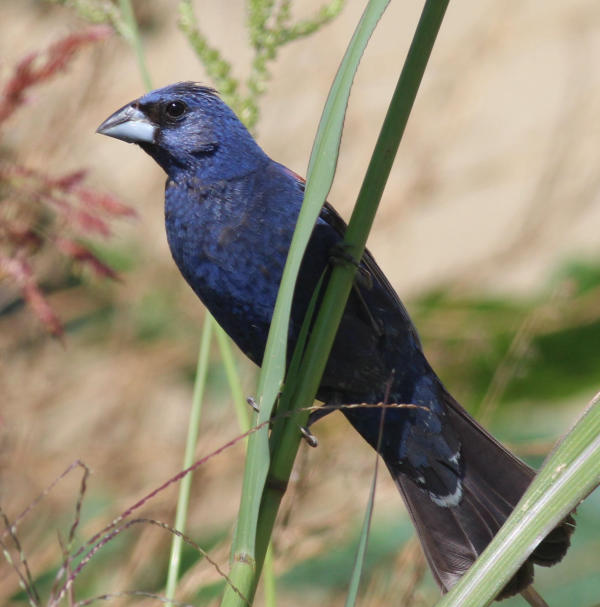
Blue Grosbeak
|
To attract vividly colored seed-eaters like Blue Grosbeaks and Indigo Buntings to your yard, the best bet is to add a white millet feeder to your feeding station. The tiny millet seeds are a favorite of doves and native sparrows, and they attract species that I don’t think would otherwise visit our yard.
Offering a diversity of both natural and supplemental food sources is a sure-fire way to increase the number and diversity of birds in your yard. White millet can be purchased as a pure product or in a high-quality seed mix. If you buy a mix, check the label to be sure that white millet, sometimes called white proso, is a main ingredient.
Although I offer white millet in a hanging feeder, I find that the Chipping Sparrows and other species spill quite a bit on the ground, where it becomes available for Mourning Doves, Northern Bobwhites and Eastern Towhees. Towhees were rare visitors to our yard until we provided white millet; now they nest nearby.
It’s equally effective to provide millet on a platform feeder or directly on the ground. Offer a small amount at first to avoid uneaten seed from becoming moldy. You can increase portions after you gauge how attractive the white millet is to your birds. During winter, when flocks of 50 or more Chipping Sparrows frequent the feeder, I use three to four cups of white millet a day.
One downside is that white millet can attract some species that you may prefer not to dominate your feeding station: House Sparrows, Brown-headed Cowbirds and blackbirds. House Sparrows compete with native species, such as bluebirds and Purple Martins, for nest cavities. Although Brown-headed Cowbirds are native, in places their numbers are unnaturally high due to human changes in the environment.
Cowbirds parasitic nesters, laying their eggs in the nests of other species, and they can impact populations of declining species such as the Wood Thrushes and some warblers. If House Sparrows or Brown-headed Cowbirds appear at your feeding station, consider removing the millet from your menu for a few days until they move on. This won’t affect the birds that were eating the millet – they will just shift to other food sources for a while. Millet is certainly worth a try – especially when you attract an exciting new species or two.
Article by Peter Stangel
Do you have a tip for attracting new birds to your yard? Please share your backyard birding experiences and photos with us at editorstbw2@gmail.com